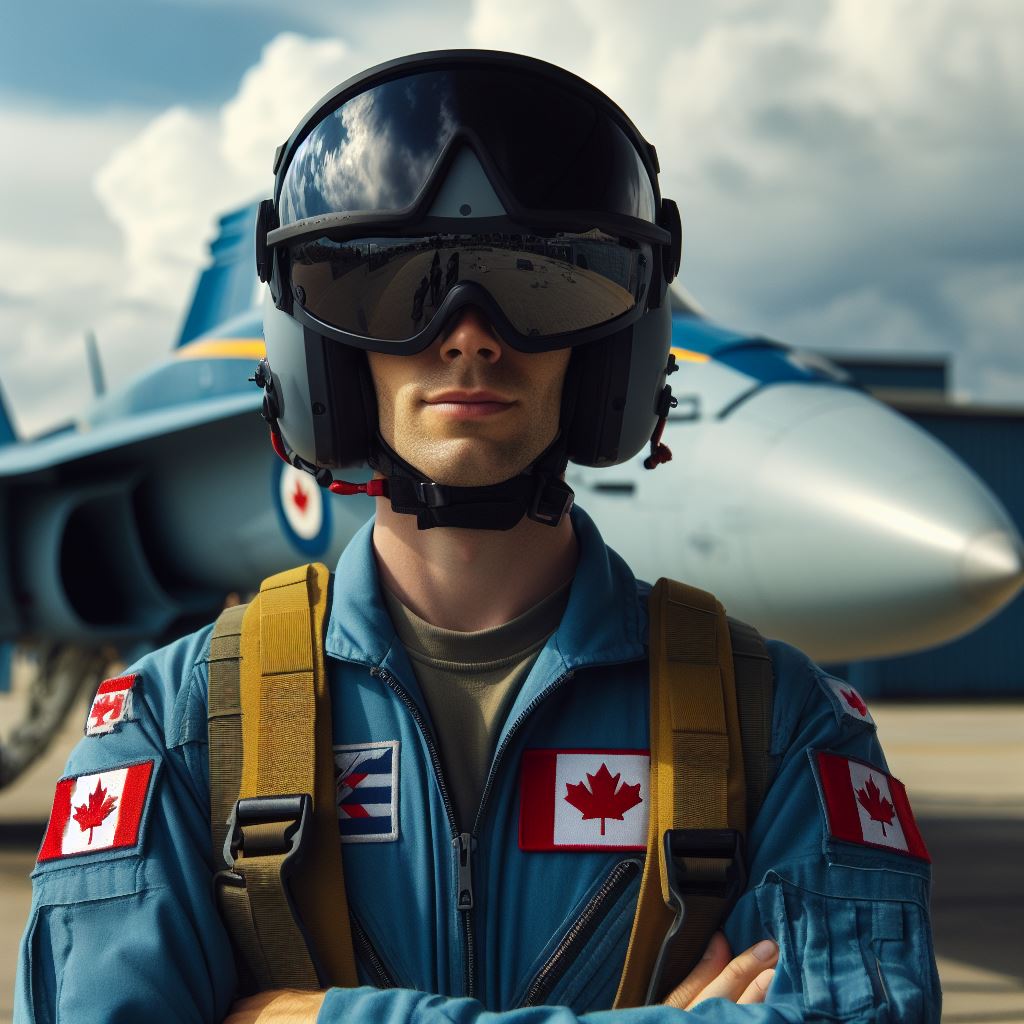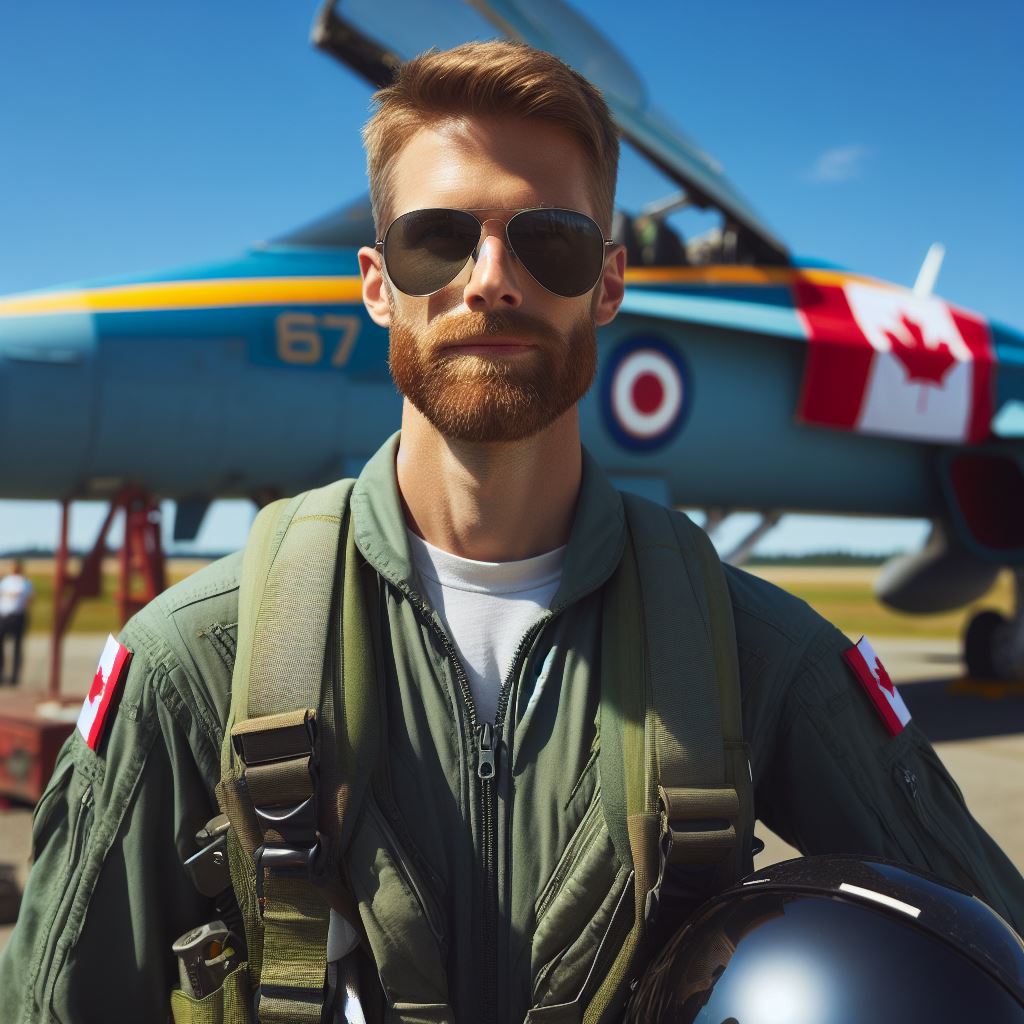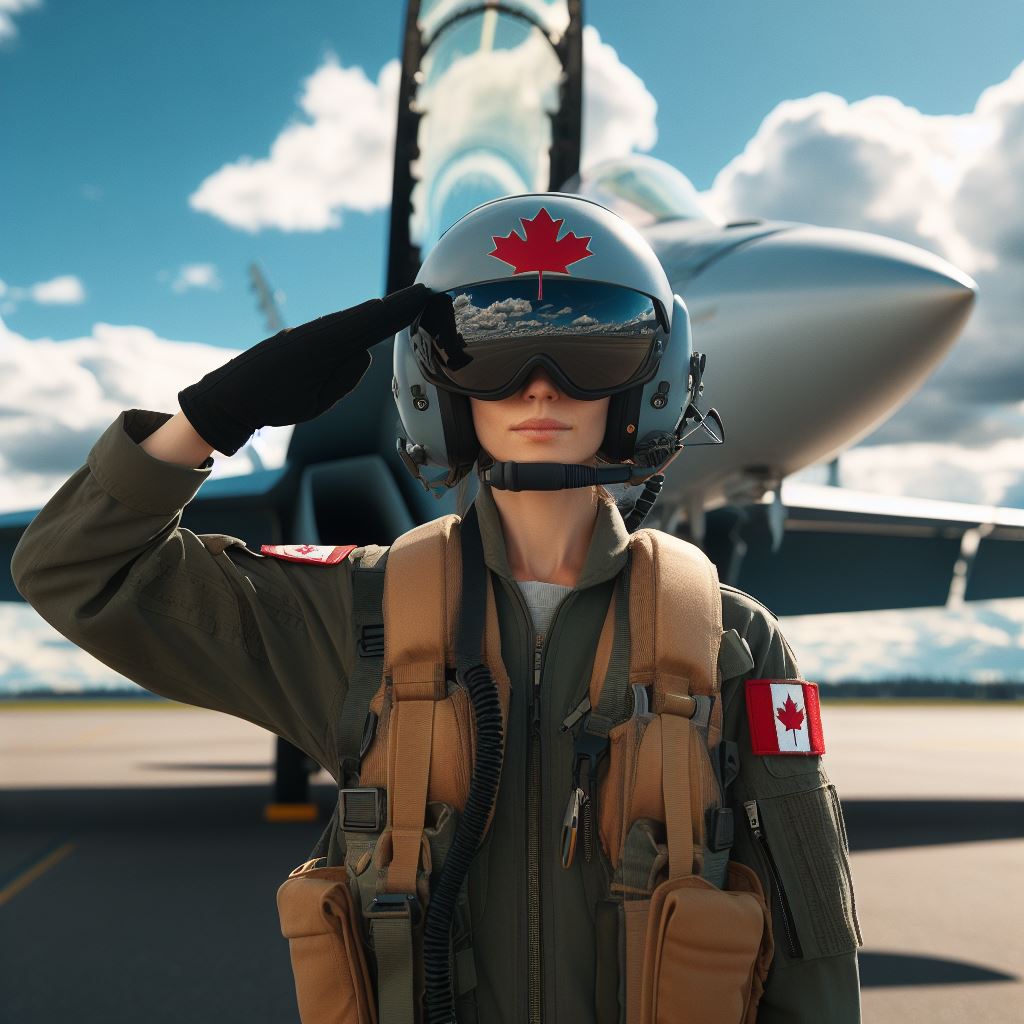Introduction
The Canadian pilot profession plays a crucial role in ensuring the safety of flights.
Pilots are responsible for the well-being of passengers and crew members throughout the entire journey.
Canadian pilots are highly trained professionals who possess the necessary skills and knowledge to operate aircraft safely.
They undergo rigorous training and are required to obtain various certifications and licenses.
Pilots have the ultimate responsibility for the safety of everyone on board.
They meticulously plan flights, consider weather conditions, and perform pre-flight checks to ensure the aircraft is in optimal condition.
During the flight, pilots actively monitor the aircraft’s systems, instruments, and engines to identify any potential issues that may arise.
They constantly communicate with air traffic control, ensuring a smooth and safe journey.
In the event of an emergency, pilots are trained to handle various situations, such as engine failures or severe weather conditions.
Their quick thinking and decision-making skills are crucial in safeguarding the lives of all those on board.
Furthermore, pilots are also responsible for maintaining a professional cabin environment.
They ensure passengers adhere to safety protocols and address any potential security threats.
In short, Canadian pilots play a vital role in ensuring the safety of flights.
Their extensive training, attention to detail, and ability to handle emergencies make them indispensable in the aviation industry.
Passengers can have peace of mind knowing that pilots are dedicated to making every flight a safe and secure experience.
The training and qualifications of Canadian pilots
Requirements to become a pilot in Canada
- Being at least 17 years old to begin flight training.
- Having a high school diploma or equivalent education level.
- Passing a Class 1 Aviation Medical Examination to ensure physical fitness.
- Having a clear criminal record and no history of substance abuse.
The training process and duration
The training process for Canadian pilots consists of both theoretical and practical components.
- Enrolling in a certified flight school or training program.
- Completing ground school courses to learn aviation theory and regulations.
- Acquiring a Private Pilot License (PPL) through flight training, simulator sessions, and examinations.
- Building flight hours and experience as a pilot-in-command under supervision.
- Obtaining a Commercial Pilot License (CPL) through advanced training and additional flight hours.
The duration of training varies depending on the individual’s availability, dedication, and the program chosen.
Licenses and certifications necessary for pilots
- Private Pilot License (PPL) allows pilots to fly for personal purposes, not for compensation.
- Commercial Pilot License (CPL) enables pilots to fly for hire or reward, providing aviation services.
- Instrument Rating (IR) allows pilots to fly based solely on instrument indications, essential for flying in adverse weather conditions.
- Multi-Engine Rating (MER) permits pilots to operate aircraft with multiple engines.
- Airline Transport Pilot License (ATPL) is the highest level of pilot certification, required for airline and commercial operations,
In addition to licenses, ongoing training and recurrent assessments are crucial for maintaining up-to-date skills and knowledge.
Canadian pilots undergo rigorous training and meet specific requirements to ensure aviation safety.
From meeting age and education prerequisites to obtaining various licenses and certifications, Canadian pilots are equipped with the necessary skills and knowledge to fly safely.
Continuous training and reevaluation further enhance their abilities, enabling them to adapt to changing industry standards and emerging technologies.
The dedication of Canadian pilots to safety contributes significantly to maintaining an exemplary aviation record in the country.
Read: Pilot Unions in Canada: A Guide
The role of Canadian pilots in aircraft safety
Canadian pilots play a crucial role in ensuring the safety of aircraft, passengers, and crew.
They are responsible for implementing safety measures both before and during flights.
Unlock Your Career Potential
Visualize a clear path to success with our tailored Career Consulting service. Personalized insights in just 1-3 days.
Get StartedPre-flight activities performed by pilots to ensure safety
To guarantee safety during pre-flight activities, pilots engage in flight planning and route analysis.
They meticulously plan their journeys, considering factors such as airspace restrictions, navigational aids, and fuel requirements.
Additionally, they carefully analyze the proposed route, taking into account weather conditions, terrain, and potential hazards.
By thoroughly planning their flights, pilots minimize risks and ensure safe departures and arrivals.
Weather assessment and monitoring are vital aspects of a pilot’s pre-flight routine.
Pilots must evaluate current and forecasted weather conditions to determine if it is suitable for flying.
They consider factors such as visibility, wind speed, turbulence, and thunderstorm activity.
If adverse weather conditions are identified, pilots may delay or divert their flights to maintain safety.
Aircraft inspection and maintenance checks are essential pre-flight activities performed by Canadian pilots.
Before every flight, they conduct thorough inspections, examining critical components and systems.
This includes checking the integrity of the aircraft’s structure, inspecting the engines, and assessing the functionality of various onboard systems.
By identifying and addressing potential issues before takeoff, pilots ensure the airworthiness of the aircraft and enhance overall safety.
In-flight responsibilities and safety measures implemented by pilots
During flights, Canadian pilots are entrusted with in-flight responsibilities that further contribute to aircraft safety.
In the event of emergencies, pilots must take swift corrective actions to protect the aircraft and its occupants.
They are trained to handle situations such as engine failures, equipment malfunctions, and extreme weather conditions.
By making informed decisions and executing appropriate procedures, pilots mitigate risks and ensure the safety of everyone on board.
In addition, pilots continuously monitor and manage various aircraft systems throughout the flight.
They closely observe navigation instruments, avionics, fuel systems, and cabin pressurization to detect any anomalies or deviations.
By proactively identifying and addressing issues, pilots prevent potential hazards and keep the aircraft operating safely.
Maintaining communication with air traffic control (ATC) is another critical responsibility of Canadian pilots.
They are in constant contact with ATC, receiving instructions, clearances, and important updates.
Effective communication ensures that pilots are aware of other air traffic, airspace restrictions, and changes in weather conditions.
This exchange of information enhances situational awareness and reduces the risk of mid-air collisions or other aviation incidents.
In fact, Canadian pilots play a vital role in ensuring the safety of aircraft by performing various pre-flight activities and implementing safety measures during flights.
Through diligent flight planning, meticulous weather assessment, thorough aircraft inspections, proactive in-flight responsibilities, and effective communication with ATC, pilots uphold the highest standards of aviation safety.
Their dedication and expertise contribute to the overall safety and well-being of passengers, crew, and the aviation industry as a whole.
Read: Navigating Canadian Airspace

Collaboration with air traffic control and other aviation professionals
In addition to piloting skills and knowledge, Canadian pilots play a crucial role in ensuring the safety of flights through collaboration with other aviation professionals.
This section will explore the collaboration between pilots and air traffic controllers, as well as the collaboration with aviation engineers and maintenance teams.
Cooperation between pilots and air traffic controllers
Cooperation between pilots and air traffic controllers is essential for the safe and efficient operation of flights.
Pilots rely on air traffic controllers to provide guidance and instructions during different phases of flight.
Similarly, air traffic controllers rely on pilots to comply with their instructions for a smooth flow of air traffic.
The following are the key aspects of their cooperation:
Sharing critical information for safe flight operations
Pilots communicate vital information to air traffic controllers, such as their flight plans, current altitude, speed, and any potential hazards or emergencies.
This sharing of information enables controllers to make informed decisions and provide appropriate guidance to pilots.
Adhering to air traffic instructions and clearances
Pilots are responsible for following the instructions and clearances provided by air traffic controllers.
This includes maintaining assigned altitudes, speeds, and headings, as well as complying with traffic separation instructions.
By adhering to these instructions, pilots contribute to the overall safety and efficiency of the airspace.
Collaboration with aviation engineers and maintenance teams
Collaboration with aviation engineers and maintenance teams is crucial to ensure the airworthiness of aircraft.
Pilots work closely with these professionals to identify and address any aircraft issues or concerns, and to ensure proper maintenance and repairs are conducted.
The following are the key aspects of their collaboration:
Reporting and addressing any aircraft issues or concerns
Pilots are trained to identify and report any abnormalities or malfunctions observed during pre-flight checks or while operating the aircraft.
These reports are valuable for aviation engineers and maintenance teams to diagnose and rectify any potential problems, ensuring the safety of future flights.
Ensuring proper maintenance and repairs are conducted
Pilots collaborate with aviation engineers and maintenance teams to ensure that scheduled maintenance tasks and required repairs are performed on the aircraft.
This includes adhering to maintenance schedules, documenting any necessary repairs, and verifying that the aircraft is in proper working condition before every flight.
Such collaboration guarantees the aircraft’s airworthiness and reduces the risk of in-flight issues.
In summary, collaboration with air traffic control and other aviation professionals is essential for Canadian pilots to fulfill their role in safety.
The cooperation between pilots and air traffic controllers facilitates the smooth flow of air traffic and enhances the overall safety of flights.
Additionally, working alongside aviation engineers and maintenance teams ensures the airworthiness of aircraft, mitigating potential risks.
By actively participating in such collaborations, Canadian pilots contribute significantly to maintaining a safe and efficient aviation system.
Read: Types of Pilots in Canada
Continuous training and professional development
Importance of recurring training for pilots
Continuous training is a fundamental aspect of ensuring the safety of Canadian pilots.
It plays a crucial role in maintaining their skills, knowledge, and awareness of international aviation regulations.
Staying updated on international aviation regulations
Aviation regulations are constantly evolving to address emerging safety concerns and technological advancements.
Therefore, it is imperative for pilots to undergo recurring training to stay updated on these regulations.
This allows them to comply with international standards, ensuring safer operations.
Enhancing skills and knowledge to handle new technologies
Advancements in aviation technology bring new tools and systems to the cockpit.
To efficiently operate these technologies, pilots need continuous training.
It equips them with the necessary skills and knowledge to handle complex systems, ensuring safe and efficient flight operations.
Participation in safety programs and organizations
In addition to continuous training, active participation in safety programs and organizations further reinforces the safety culture among Canadian pilots.
Involvement in safety initiatives such as the Safety Management System (SMS)
The Safety Management System (SMS) is a comprehensive approach to managing safety.
Canadian pilots actively participate in this initiative, which includes risk assessment, safety reporting, and proactive hazard identification.
By embracing SMS, pilots contribute to a safer aviation environment and prevent accidents.
Joining professional associations to share experiences and best practices
Canadian pilots are encouraged to join professional associations such as the Canadian Owners and Pilots Association (COPA) and the Air Line Pilots Association (ALPA).
These associations provide platforms for pilots to exchange experiences, share best practices, and learn from each other’s knowledge and expertise.
Collaborative efforts among pilots ultimately enhance safety in the aviation industry.
In a nutshell, continuous training and professional development play a crucial role in ensuring the safety of Canadian pilots.
Staying updated on international aviation regulations and enhancing skills are essential for pilots to adapt to changing technologies.
Active participation in safety programs and organizations further strengthens the safety culture.
By embracing continuous training and actively engaging in safety initiatives, Canadian pilots contribute to a safer aviation industry for all.
Read: Pros and Cons of Being a Pilot
Conclusion
Canadian pilots play a crucial role in ensuring flight safety by actively participating in various safety measures.
Canadian pilots serve as the vigilant guardians of flight safety, navigating the skies with precision and dedication.
They execute critical safety protocols with unwavering focus, ensuring passengers reach their destinations securely.
Through continuous training and adherence to stringent standards, these pilots safeguard against potential hazards, prioritizing the well-being of all onboard.
Their quick decision-making and adept handling of complex situations underscore their indispensable role in maintaining aviation safety.
Gratitude is extended to the relentless efforts of Canadian pilots who tirelessly commit to upholding safety standards.
Their dedication to continuous improvement and adaptation to evolving technologies reinforces the nation’s reputation for excellence in aviation safety.
Canadian pilots stand as exemplars of unwavering commitment, playing a pivotal role in securing the skies and ensuring the safety of countless passengers.
We must acknowledge and appreciate the ongoing efforts and dedication of pilots in upholding safety standards.




